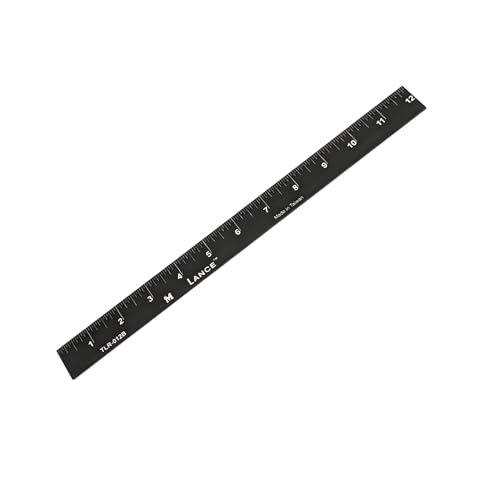Ever stood in front of your car, ready to order a replacement headlight online, and suddenly frozen? You’re faced with a simple choice: left or right.
This single decision is a common point of frustration. The core of the problem is a concept called Vehicle Side Orientation, and getting it wrong means wasted time and money. You need a simple, universal rule that works every time.
The left side of a car is always the side on your left when you are sitting in the driver’s seat facing forward. This is the universal rule used by all mechanics, manufacturers, and parts suppliers worldwide. In this guide, we’ll break down this simple rule so you always get the right part on the first try.
Key Facts
- Universal Standard: The driver’s seat perspective is the single, universal standard for determining the left and right sides of any vehicle, a rule adopted by the entire global automotive industry.
- Manufacturing Consistency: This standard exists to eliminate ambiguity, ensuring a part labeled ‘LHS’ from any country fits the left side of any car, which is crucial for global manufacturing and parts logistics.
- “Driver’s Side” Is Ambiguous: While 65% of the world’s population drives on the right (LHD), making “driver’s side” mean “left,” this term is reversed for the other 35% in countries like the UK, causing significant confusion.
- Most Common Error: The number one mistake is determining the side while standing in front of the car looking at it, which always gives you the reverse of the correct orientation.
- Safety Criticality: Adhering to this standard is vital for safety, as components like headlights have specific beam patterns for the left or right side to prevent blinding other drivers.
What Is the Universal Rule for the Left Side of a Car?
The left side of a car is always the side on your left when you are sitting in the driver’s seat facing forward. This is the universal rule used by all mechanics, manufacturers, and parts suppliers worldwide. This perspective never changes, regardless of where you are standing or where the steering wheel is located.

Think of it as the vehicle’s own fixed “left” and “right.” It’s not relative to where you are standing. Mechanics and parts catalogs use specific terms for this standard: LHS (Left-Hand Side) and RHS (Right-Hand Side). Memorizing this single rule of perspective is the key to eliminating all confusion.
Why Is This “Driver’s Perspective” the Industry Standard?
The automotive industry uses the driver’s seat perspective as a universal standard to eliminate ambiguity in manufacturing, repair, and global parts distribution, ensuring a part labeled ‘LHS’ fits the left side of any vehicle worldwide. Without this single, unwavering rule, chaos would dominate the global supply chain.
Imagine this real-world scenario:
* A headlight is designed in Japan.
* It’s for a car assembled in Germany.
* That car is sold in the United States.
* A mechanic in the USA needs to order a replacement.
If each country used a different reference point, ordering the correct part would be impossible. The “driver’s perspective” creates a common language. This is especially critical for asymmetrical parts—components like headlights, side mirrors, and some body panels that are not interchangeable from one side to the other. This standardization is the foundation that allows the modern global automotive industry to function efficiently.
How Does “Driver’s Side” Cause Confusion with Left & Right?
The primary point of confusion arises because “Driver’s Side” is a regional term, not a universal one. While the car’s physical left side is always the same, the side the driver sits on changes depending on the country’s traffic laws.
This creates two main categories:
* Left-Hand Drive (LHD): Used in the USA, Canada, and most of Europe. The steering wheel is on the left side of the car.
* Right-Hand Drive (RHD): Used in the UK, Australia, Japan, and India. The steering wheel is on the right side of the car.
Here’s the critical takeaway: in an LHD country, the “driver’s side” is the left side. In an RHD country, the “driver’s side” is the right side. From our practical experience, this is the most common cause of ordering the wrong part internationally. If you order a “driver side” mirror from a UK website for your US car, you will receive a right-side mirror.
This table breaks down the difference for maximum clarity:
| Terminology | Meaning in LHD Country (e.g., USA) | Meaning in RHD Country (e.g., UK) | Universality |
|---|---|---|---|
| Left Side (LHS) | The side on the driver’s left | The side on the passenger’s left | Universal |
| Right Side (RHS) | The side on the driver’s right | The side on the passenger’s right | Universal |
| Driver’s Side | Left Side | Right Side | Regional / Ambiguous |
| Passenger’s Side | Right Side | Left Side | Regional / Ambiguous |
What Are the Most Common Mistakes When Identifying Car Sides?
The most common mistake is determining the side while standing in front of the car, which reverses the orientation. Always use the perspective from inside the driver’s seat. By understanding the most frequent errors, you can easily avoid them.
Based on countless part returns and customer service queries, these are the top pitfalls:
- ❌ The “Standing in Front” Mistake: This is the big one. When you face your car’s grille, its left side is on your right. This reversed perspective is intuitive but incorrect. Solution: Always ignore this view. The only correct perspective is from inside the car, looking out.
- ❌ The “Driver’s Side” Assumption: Many people assume “driver’s side” is a universal synonym for “left side.” This is only true in LHD countries. Solution: When buying parts, especially online, prioritize the universal terms “Left (LHS)” and “Right (RHS)” over ambiguous regional terms.
- ❌ Forgetting About RHD Countries: When shopping on global platforms like eBay, it’s easy to forget the seller might be in an RHD country like the UK. Solution: If a listing only says “driver side,” check the seller’s location. If they are in an RHD country, their “driver side” part is for the right side of the car.
How Can You Apply This Rule to Order the Right Car Parts?
When ordering car parts, always use the universal terms “Left (LHS)” or “Right (RHS)”. Verify the part’s location by sitting in your car and double-check the seller’s country if they only use the term “driver side.” Following a simple checklist ensures you get the right component every time.
Here are the professional-level best practices to apply:
- ✅ Trust Universal Terms: Prioritize your search for parts using the abbreviations LHS (Left-Hand Side) and RHS (Right-Hand Side). These are the official terms used in parts catalogs and guarantee clarity.
- ✅ Physically Check Your Vehicle: Before you even open a browser tab, go to your car. Sit in the driver’s seat and physically point to the part you need to replace. Is it on your left or right? This simple, one-minute check is the most foolproof method.
- ✅ Use Your VIN: Your Vehicle Identification Number (VIN) is your car’s unique fingerprint. Using your VIN in online OEM parts catalogs will show you diagrams and part numbers specific to your car, eliminating guesswork.
- ✅ Be Skeptical of Ambiguous Listings: If an international seller’s listing only says “driver side,” proceed with caution. The safest action is to find another listing that uses the universal LHS/RHS terminology.
FAQs About what side of the car is left
Is the driver’s side always the left side of the car?
No, the driver’s side is not always the left side. In Left-Hand Drive (LHD) countries like the United States, the driver’s side is the left side. However, in Right-Hand Drive (RHD) countries like the United Kingdom or Australia, the driver’s side is the right side of the vehicle. The physical left side of the car never changes.
What do LHS and RHS mean on car parts?
LHS stands for “Left-Hand Side” and RHS stands for “Right-Hand Side.” These are the universal, non-ambiguous terms used by manufacturers and suppliers globally. When ordering parts, always look for these designations instead of regional terms like “driver’s side” to ensure you receive the correct component.
If I stand in front of the car, which side is left?
If you are standing in front of the car looking at it, the car’s left side will be on your right. This is the most common source of confusion and errors. To avoid mistakes, you must always ignore this perspective and instead determine the side from the viewpoint of sitting inside the driver’s seat.
Does the rule change for cars in the UK or Australia?
No, the universal rule does not change. The physical left side of the car remains the left side, regardless of the country. What changes is the position of the steering wheel. In the UK and Australia (RHD countries), the steering wheel is on the right, meaning the car’s left side is the passenger side.
How do I know which side headlight or mirror to order?
Sit in your driver’s seat and face forward. If the part you need to replace is on the side of your left arm, you need a Left-Hand Side (LHS) part. If it is on the side of your right arm, you need a Right-Hand Side (RHS) part. Always physically check your own vehicle first.
Final Thoughts
Mastering the concept of a car’s left and right sides boils down to one simple, unwavering principle. By internalizing this golden rule, you empower yourself to navigate online parts stores, communicate clearly with mechanics, and avoid the common, frustrating mistakes that cost both time and money.
Here are the most critical points to remember:
- The Golden Rule: The left and right sides of a car are always determined from the perspective of someone sitting in the driver’s seat facing forward. This is the non-negotiable industry standard.
- “Left Side” is Universal, “Driver’s Side” is Regional: The physical left side of the car is always the same. The term “driver’s side” is ambiguous because it means left in the US (LHD) but right in the UK (RHD).
- Never Trust the View from the Front: The most common mistake is determining the sides while standing in front of the car. This perspective will always give you the reverse of the correct orientation.
- Use LHS and RHS for Parts: When ordering parts online, especially from international sellers, always look for the universal terms “LHS” (Left-Hand Side) and “RHS” (Right-Hand Side) to avoid costly errors.
- When in Doubt, Physically Check: The most foolproof method is to go to your own car, sit in the driver’s seat, and physically identify which side needs the part before you place an order.
Armed with this clear understanding, you can approach your next car maintenance task with the confidence of a seasoned professional.







